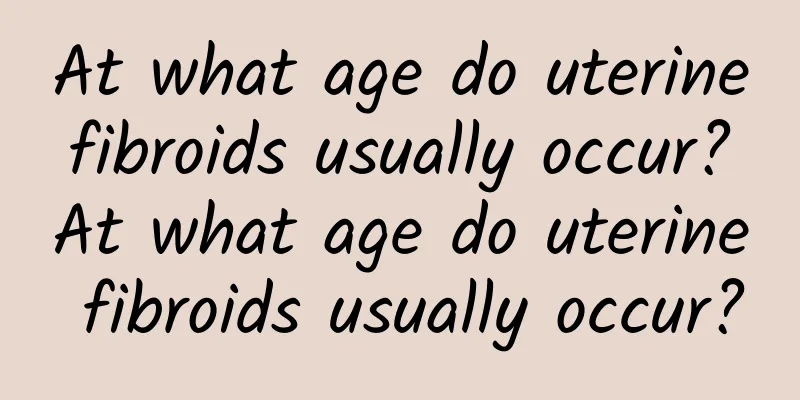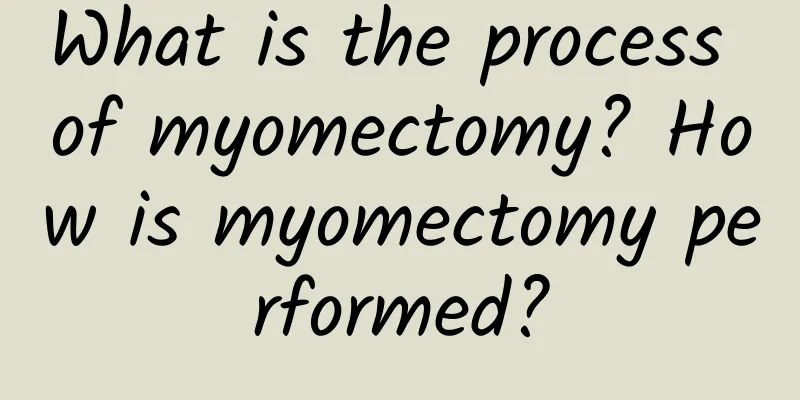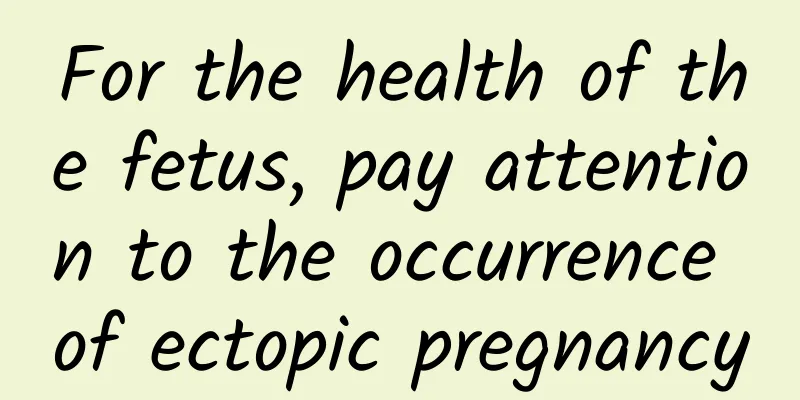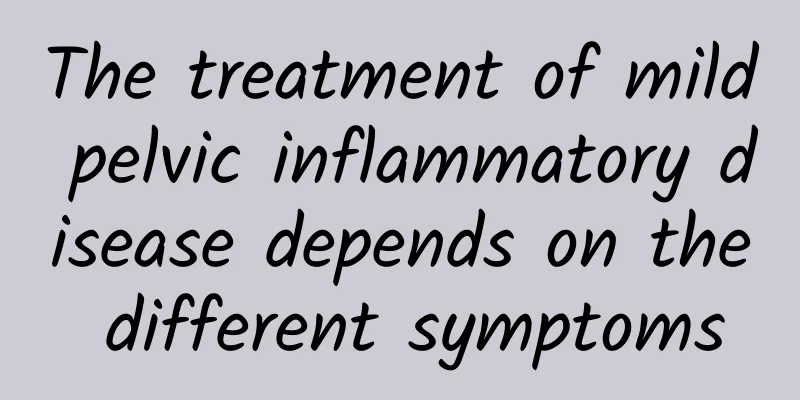At what age do uterine fibroids usually occur? At what age do uterine fibroids usually occur?

|
What age do uterine fibroids usually occur? Uterine fibroids are common benign tumors in gynecology, which often occur during the reproductive period of women and cause many problems for women's health. This article will introduce the age range in which uterine fibroids usually occur and the most common age group of onset. 1. Puberty and uterine fibroids Adolescence is a critical period of female physiological development and also a stage for the onset of uterine fibroids. At the beginning of puberty, female ovaries begin to secrete estrogen, which plays a key role in the growth and development of the uterus. During this process, a small number of women may experience early symptoms of uterine fibroids, such as irregular menstruation and abdominal pain. Although the incidence of uterine fibroids during adolescence is relatively low, the possibility of uterine fibroids cannot be completely ruled out in this age group. 2. Reproductive period and uterine fibroids The reproductive period is the most common age group for the occurrence of uterine fibroids. On a physiological level, the secretion of estrogen reaches its peak at this time, promoting the growth and repair of the endometrium. Since the endometrium is the main origin of uterine fibroids, women in this period are more likely to develop uterine fibroids. The uterus of women in the reproductive period is also more susceptible to external stimuli, such as childbirth and miscarriage, which can also increase the risk of uterine fibroids. Therefore, women in the reproductive period need to undergo regular gynecological examinations to detect and treat uterine fibroids in a timely manner. 3. Menopause and uterine fibroids Menopause is a stage when women undergo great physiological and psychological changes. During this period, women's ovarian function gradually declines and estrogen levels begin to drop. However, despite the drop in estrogen levels, uterine fibroids may still appear or continue to exist during menopause. This is because uterine fibroid cells have the ability to produce estrogen independently. Even if the estrogen secreted by the ovaries decreases, uterine fibroids can still obtain the required estrogen through other pathways. Therefore, menopausal women also need to pay attention to the development and treatment of uterine fibroids. Although uterine fibroids generally occur in women during adolescence, childbearing years, and menopause, it does not mean that women of other ages will not get uterine fibroids. Women of all ages need to pay attention to their gynecological health and have regular gynecological examinations. Early detection and treatment of uterine fibroids can help avoid further development of the disease and the discomfort it brings to women's health. |
>>: What medicine can be applied to uterine fibroids? What medicine is good for uterine fibroids?
Recommend
Can I eat pomegranates if I have a miscarriage?
Pomegranates contain a variety of vitamins and mi...
What Chinese medicine is effective for cervical warts
In daily life, cervical warts are a sexually tran...
Acupuncture and moxibustion for treating chronic pelvic peritonitis
Pelvic peritonitis is a common gynecological dise...
What medicine will the doctor prescribe after a woman has an abortion? How long should the doctor take the medicine prescribed after the abortion?
You should also take good care of your body durin...
What is the reason for early menstruation for two consecutive months?
What is the reason for early menstruation for two...
What are the most common symptoms of cervical erosion in life?
Cervical erosion is a gynecological disease with ...
Beware! Amenorrhea may be caused by ectopic pregnancy
Nowadays, ectopic pregnancy seriously affects wom...
The red warning signs of early ectopic pregnancy need to be identified as soon as possible
Ectopic pregnancy is a dangerous gynecological ac...
Painless abortion surgery must be checked by a doctor before
Since there are different types of painless abort...
Good methods should be used to care for patients with uterine fibroids
In recent years, with the increasing incidence of...
Create a slim waist! Experts teach 3 "waist slimming" exercises
A slim waist, a symbol of femininity, is the drea...
Press out good curves~Achieve the lines of arms, armpits and waist at one time!
【1. Push from elbow to armpit】 Using the basic gr...
What are the early symptoms of uterine fibroids?
What are the early symptoms of uterine fibroids? ...
What are the treatments for Bartholinitis?
What are the treatments for Bartholinitis? This i...
What is the best time to have an abortion?
Abortion is the fastest way to terminate an unwan...









